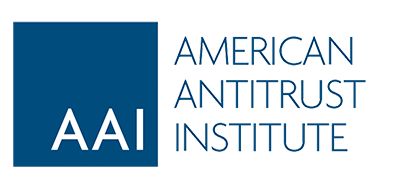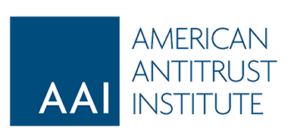The American Antitrust Institute (AAI) weighed in on the new U.S. Department of Justice (DOJ) and Federal Trade Commission (FTC) Vertical Merger Guidelines, concluding that they “fall short” of what is needed to protect competition. AAI President Diana Moss explained that the new guidelines “fail to provide balanced and transparent agency guidance at a critical time when rising market concentration and a rash of vertical integration is restructuring key markets in the U.S.”
AAI expressed disappointment that the agencies cast aside the open and transparent process they had started to put in place prior to the onset of the COVID-19 crisis. Instead of fully vetting public opinion on the draft guidelines, the agencies held only one DOJ workshop, cancelled and never rescheduled a second FTC workshop, and side-stepped a second round of comments. This contrasts starkly with the careful and thorough effort the agencies put into crafting the 2010 Horizontal Merger Guidelines.
“We are heartened that the agencies accounted for a number of major concerns raised in AAI’s comments in producing final Vertical Merger Guidelines,” said Moss. Gone is the dangerous “safe harbor” that was included in the draft version of the guidelines and that would have impaired vertical merger enforcement. The guidelines also highlight the importance of considering: existing levels of market concentration; the effect of vertical mergers on raising entry barriers; and the competitive significance of bargaining leverage between buyers and sellers in a supply chain. AAI explained the foregoing concerns in its February 25, 2020 comments to the agencies.
However, AAI remains concerned that the final Vertical Merger Guidelines fail to provide guidance that supports strong enforcement, on a number of issues raised in its comments. The agencies did not include a “presumption” that certain vertical mergers are likely to harm competition, rebuttable by strong evidence that a merger would be unlikely to enhance market power. This is a striking deviation from the Horizontal Merger Guidelines. An out-sized focus on uncertain and controversial potential efficiencies, such as the elimination of double margins, will impair vertical merger enforcement moving forward. Moreover, the failure to formally recognize how vertical mergers can increase a firm’s ability to evade regulation is a critical omission.
Perhaps most important, AAI notes the unsubstantiated assumptions about vertical mergers upon which the guidelines appear to be based. They are driven by the idea, as the guidelines themselves state, that “…the agencies more often encounter problematic horizontal mergers than problematic vertical mergers…” This sweeping assertion rests on the weighty assumption that the agencies’ past actions in vertical mergers have been the correct ones.
“As we know from many past vertical mergers, and most recently in DOJ’s revisiting of the consent order in the Live Nation-Ticketmaster merger, hard evidence of post-merger harms is real and shines the spotlight on how damaging they can be,” stated Laura Alexander, AAI’s Vice President of Policy.
Consumers, workers, and the markets need far more than what the antitrust agencies have delivered in the new Vertical Merger Guidelines. AAI notes that they fall well short of what was necessary to provide balanced, informed guidance and transparency for a critical area of merger enforcement. “Their legacy will be to weaken vertical merger enforcement,” Moss stated, “and we can only hope that they are withdrawn when the current administration is gone and the new agencies start over with a legitimate and open review process and a balanced look at the substance.”


